Levels
Level 1. The world of video games (Equivalence: 4 CREDITS)
- The origin of video games and games in antiquity
- The appearance of new technologies and the first video games
- The evolution of video games and the proliferation of the industry
- Introduction to localization. Video game localization
- The concept of GILT and video games
- Video games today: the current generation, market analysis and company evolution
- The future and trends in the video game sector
- Video games in society: evolution and application
- The concept of video games and their localization
1.1 The world of video games and introduction to localization
1.2 Video games today, trends, the industry and their localization
Mr. Alfredo López Pérez (Localizer)
Mr. Ismael Marín Castañeda (Localizer)
Level 2. How is a video game born? Video games in the industry and their localization (Equivalence: 5 CREDITS)
- Video game genres: an academic and industry focus
- The importance of localization and a descriptive analysis of Final Fantasy
- Practical introduction (I) to localizable elements in video games
- Introduction to the world of art applied to video games and their localization
- Artistic influences in video games: from Space Invaders to Assassin’s Creed
- Are video games art?
- The localization of elements and historical and artistic references
- Practical introduction (II) to localizable elements in video games
- Localization, marketing and its importance in the process
- The start of video game localization: "All your base are belong to us"
- What material is localized in a video game? Beyond the game itself
2.1 Video game genres and introduction to localizable elements
2.2 Historical-artistic models in the world of video games, their localization and other localizable elements
2.3 Types of texts and localizable components
Mr. Alfredo López Pérez (Localizer)
Level 3. The localizer's inventory: computer assisted translation and machine translation (Equivalence: 4 CREDITS)
- Machine translation (MT) and computer assisted translation (CAT) and their application in the area of video games
- What types of formats and files does a localizer work with?
- Computer assisted translation programs and the most frequently used CAT tools
- Creating and maintaining translation memories
- Memories, style guides and glossaries for video game companies and clients. Mouse or ratón?
3.1 Computer assisted translation (CAT) and machine translation (MT)
3.2 Computer assisted translation programs
Dr. Cristina Ramírez Delgado (ISTRAD / Universidad Pablo de Olavide)
Ms. Rosario de Zayas Rueda (Tatutrad S.L. Company)
Level 4. The video game development phase (Equivalence: 6 CREDITS)
- The localization process and its phases: preparation, localization, revision, testing and bug fixing
- Video game localization resources: translation kit, style guides, terminological resources and machine translation
- Accessibility in video games: the current state and diversity of accessibility in video games
- Accessibility strategies and recommendations
- A new profession: video game localizer and expert in accessibility
- Translatable text, tags, sources and coding
- Text boxes and video game menus: game menu, system, options, inventory, characters, etc.
- Context in video game localization
- Dialogues, objects and characters in video games: swords, amulets, villains and heroes
- Images and graphic resources in video games
- Localizing platform and action video games: from jumps to shots
- Localizing role-playing and adventure video games: swords, dragons and many stories
- Localizing strategy, simulation and sports video games
4.1 Video game localization and localization phases
4.2 La accesibilidad en videojuegos
4.3 Texto traducible y otros elementos
4.4 Localización de videojuegos por géneros
Ms. Carolina Perales Martín (PLAION Company)
Mr. Alfredo López Pérez (Localizer)
Level 5. The subtitling and dubbing phase (Equivalence 3 CREDITS)
- Dubbing in video games: general aspects and limitations according to platform
- Localizing cinematic and audio components: dubbing
- In the dubbing studio: video game characters, translators, dubbing actors, technicians and celebrities
- The growing industry of video game dubbing. Is video game dubbing profitable?
- Practical analysis: the best and worst of video game dubbing. Metal Gear Solid vs. Age of Pirates
- Localizing cinematic and audio components: subtitling
- What is subtitled?
- Subtitling protocols in video games
- Subtitle font, size and color
- Current problems in video game subtitling
- Subtitling in 360º content: positioning and translation strategies
5.1 Dubbing in video games
5.2 Subtitling in video games
Dr. Laura Mejías-Climent (Universitat Jaume I)
Ms. Eugenia Arrés López (Professional translator and localizer)
Dr. Óscar P. Frades Villar (Grupo INNOVA – Universidad Complutense de Madrid)
Level 6. The testing phase (Equivalence: 4 CREDITS)
- The testing phase: processes and how video game companies work
- Working while playing: the figure of the video game tester
- Quality control in video games
- Revision, testing and bug fixing
- Roles in video game testing
- Methodology and processes in video game testing
- Bug classification
6.1 The localization process: the video game testing and quality control phase
6.2 Video game testing: roles, types and methodology
Mr. Pierangelo Canton (Localizer)
Level 7. Packaging, promotion and additional material (Equivalence: 6 CREDITS)
- Beyond the video game: additional material
- Localizing official video game guides
- Localizing patches and updates. Video games: the sequels were never good
- Additional documents: help files, manuals and sleeves
- Legal texts in video games
- The advertising sector and promoting video games
- Localizing promotional text in video games
- Editing images with graphic editing tools
- Introduction to the web and website localization
- Structure and components of a website: images, HTML files, style sheets
- Web page computer languages
- Tools and processes in web page localization
- Localizing video game websites: theory and practice
- The digital image
- Digital image formats
- Image editing tools
7.1 Localizing video game guides and additional material (patches and updates)
7.2 Localizing promotional video game material
7.3 Localizing video game websites
7.4 Editing graphic elements
Dr. Rocío Márquez Garrido (ISTRAD)
Dr. Jesús Torres del Rey (Universidad de Salamanca)
Level 8. Development and marketing for mobile devices (Equivalence: 3 CREDITS)
- The concept of application for mobile devices
- Devices and platforms
- Current overview of mobile application localization
- Options for mobile application localization: machine translation, social translations or crowdsourcing (collaborative translation) and professional translation
- Components of an application for a mobile device
8.2 Localizing applications and video games for mobile devices
- The mobile application and game localization process
- Problems with context and terminology in mobile devices
- Tools and resources for mobile application localization
Mr. Alfredo López Pérez (Localizer)
Dr. Cristina Ramírez Delgado (ISTRAD / Universidad Pablo de Olavide)
8.1 Introduction to mobile application localization
Level 9. Project management in the video game sector (Equivalence: 3 CREDITS)
- Project management: video games and localization
- Localization workflow and professionals: from localizers to testers
- Project planning
- Software and tools for project management
- Quality control and process control
9.1 Video game translation and localization project management
9.2 Tools for project management
Mr. Aitor Rodríguez Rodríguez (ISTRAD)
Dr. Juan José Arevalillo Doval (Hermes Traducciones y Servicios Lingüísticos S.L. Company)
Mr. Ismael Marín Castañeda (Localizer)
Ms. Rosario de Zayas Rueda (Tatutrad S. L. Company)
Level 10. The professional sector (Equivalence: 2 CREDITS)
- Current panorama in the localization sector
- National and multinational localization and video game companies
- Being a localizer and freelancer in the localization sector
- How do I become a professional video game localizer?
10.1 The professional sector
Mr. Octavio López Manchado (Translator)
Applied Module (equivalence: 10 ECTS credits)
To complete this module, students must choose from the following three (3) options:
Project. Completion of a practical project in the field of localization. This option must be completed offsite.
Internship. This modality is based on the student completing an internship at a translation agency or language services company. The process of assigning the internship and signing the agreement with the company will be completed by the internship department and students are free to choose their preferred modality, also taking into consideration the preferences of the companies available. The course load is approximately 250 work hours.
Work recognition. Previous work as an employee or freelancer can be recognized by submitting the required documentation. This work must be related to translation or related fields (revision, quality control, project management, etc.).
Módulo TFM (Equivalencia: 10 CRED)
Based on the selection for the Applied Module, students will complete one (1) of these three (3) projects:
Project TFM. This consists of writing a report that describes the process followed to translate the practical project. It will consist of a theoretical portion, in which the theoretical concepts related to the translation will be presented, as well as a more practical portion in which the problems and difficulties encountered as well as proposed solutions are analyzed. This will only be completed if the project option was chosen for the Applied Module.
Internship TFM. This consists of writing a report that describes the internship period. It will consist of a theoretical portion, in which the theoretical concepts related to the activities completed during the internship are presented (in case of a variety of activities, students may choose just one or several), as well as a more practical portion in which the problems and difficulties encountered as well as proposed solutions are analyzed. This will only be completed if the Internship option was chosen for the Applied Module.
Work recognition TFM. This consists of writing a report that describes the recognized work activity. In will consist of a theoretical portion, in which the theoretical concepts related to the recognized work activity are presented (in case of a variety of activities, students may choose just one or several), as well as a more practical portion in which the problems and difficulties encountered as well as proposed solutions are analyzed. This will only be completed if the Work recognition option was chosen for the Applied Module.
Consulta el pdf del programa académico.


